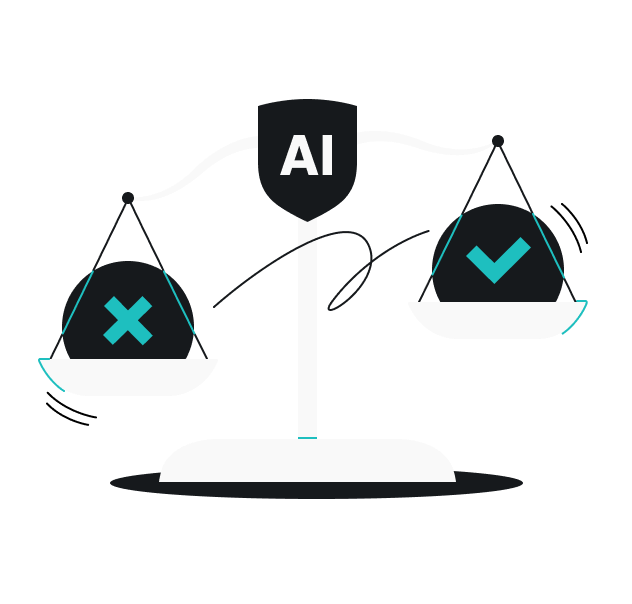Featuring: Vytautas Kaziukonis, CEO of Surfshark
Long gone are the days of only discovering the existence of cyber threats and deciding what to name each of them. Cyberthreats grow — not only in complexity but in frequency, and one of the things that can safeguard our interconnected world is cybersecurity. However, as threats evolve, it’s harder for people to stay on top of it. The role of artificial intelligence (AI) and machine learning (ML) has become highly significant in cybersecurity matters. They show promising potential, but what can they actually offer us to combat the ever-evolving threats?
Evolution of cyberthreats
Technology advances, but cybercriminals don’t lag. We have already witnessed the sophisticated evolution of once-known (or not known at all) online attacks, such as:
- Phishing that has evolved from generic emails sent to a mass audience hoping to trick a few people to social engineering techniques to exploit poor employee training, weak email filtering and weak (or non-existent) authentication measures;
- Ransomware has evolved from simple system lockouts until a ransom is paid to taking advantage of unpatched software, weak passwords and phishing attacks that deliver malicious software;
- Supply chain attacks that have evolved from direct attacks on large organizations to exploiting weak vendor security practices and unthorough supplier or vendor checks;
- Zero-day exploits, which were less common in the past due to the limited number of software vulnerabilities, now target unknown security flaws in software and systems before developers can even issue a patch.
It’s not only that these threats exploit vulnerabilities in human behavior. They also exploit weaknesses in software and even networks. Traditional security measures struggle to keep up, so we need more proactive and innovative security solutions.
AI and machine learning in cybersecurity now
AI can quickly analyze large amounts of data to spot real-time threats, whereas machine learning can find patterns that suggest a possible attack, helping to respond to it before it happens. The market for AI technologies is enormous — it amounted to around US$200 billion in 2023. It’s forecasted to reach or surpass US$1.8 trillion by 2030. More businesses are using machine learning programs in their operations, such as:
- Predictive analytics identify the likelihood of future outcomes based on historical data; AI and ML can spot particular patterns or trends in large datasets;
- Anomaly detection that identifies unusual patterns or behaviors in data; ML can learn normal behavior and knows how to spot anomalies quickly;
- Threat intelligence that helps companies understand and mitigate risks by analyzing current and emerging threats; AI and ML can adapt to new data and threats;
- Early valuable opportunities spotting that allows companies to act swiftly and capitalize on them; ML can identify trends in data that indicate potential business advantages.
However, while businesses widely use AI and ML in their operations, so do cybercriminals. They utilize these programs in cyber offenses to:
- Automate and enhance cyberattacks, such as coming up with more convincing phishing attacks or completely evading detection systems;
- Exploit weaknesses in AI systems by tampering with input data to deceive AI models, potentially leading to incorrect threat assessments or bypassing security measures;
- Identify vulnerabilities that can be exploited to create targeted malware attacks, potentially infiltrating systems more effectively.
Challenges in implementing AI and machine learning
While fighting AI-powered dangers presents significant challenges, implementing AI and ML into cybersecurity also poses its own set of difficulties, such as:
- Data privacy: to work well, these technologies need access to large datasets. It becomes harder to balance out the AI capabilities while protecting sensitive data;
- Adversarial attacks: cybercriminals can manipulate AI systems, leading to incorrect threat assessments or bypassing security measures;
- Lack of skilled workers: nearly 40% of companies struggle to find qualified data engineers, scientists, etc. This issue is forecasted to remain since around 80% of businesses believe the demand for AI and machine learning skills will increase.
As these challenges persist, the future of AI and ML in cybersecurity will rely on creative solutions and strategies to overcome them, leading to significant progress in the field.
Future predictions
AI and machine learning are bound to evolve, and their impact on cybersecurity will only grow. Their potential is limitless, from improving decision-making to customer experiences and even sustainability.
If we were to anticipate specific breakthroughs, we expect practical uses of generative AI that will showcase its potential and exciting advancements in automated systems, specialized tools, and hardware. AI could become more autonomous and start independently identifying and conquering threats, and AI-driven systems could even begin to offer personalized protection.
However, we cannot forget the potential for various exploits and misunderstandings surrounding AI models. We can predict an increase in more severe cyberthreats, complex exploits and deceptive content creation. While the benefits of AI and ML increase, so does the market of exploiting their benefits for the worse — with the help of AI and ML, online dangers will become even more sophisticated, and it will be even harder to detect and combat them. Despite this, AI will become integral to daily life, enhancing various processes and eventually earning our trust.
Preparing for what’s next
AI and machine learning are not just transforming the cybersecurity landscape but defining it. They offer everything from threat detection and response to prevention. However, despite their advantages, implementing AI and machine learning is not without challenges. Businesses need to carefully consider data privacy risks, potential adversarial attacks and the lack of qualified workers. By adopting a strategic approach and embracing that the future of cybersecurity is here, companies can build robust cybersecurity frameworks.
This article originally appeared on Forbes.




